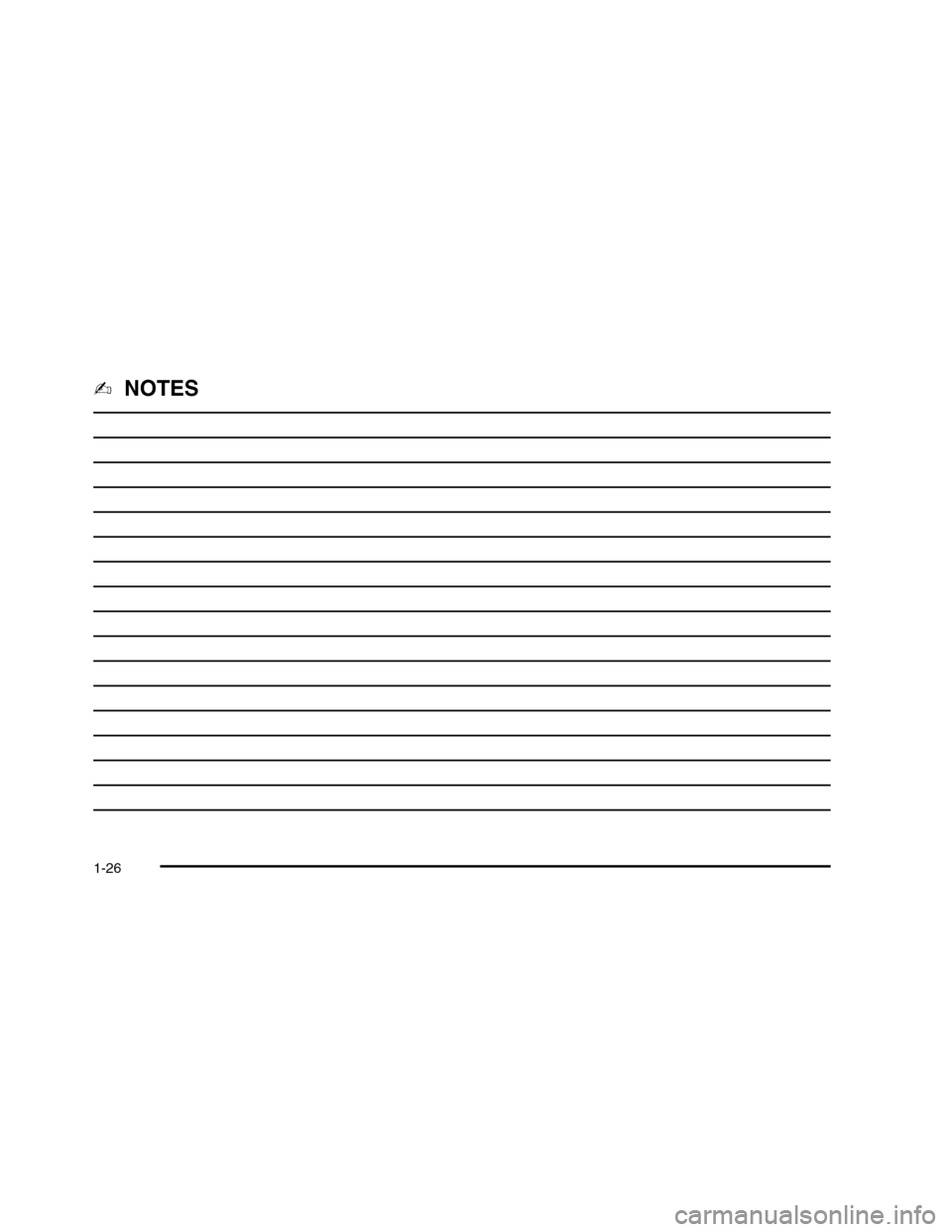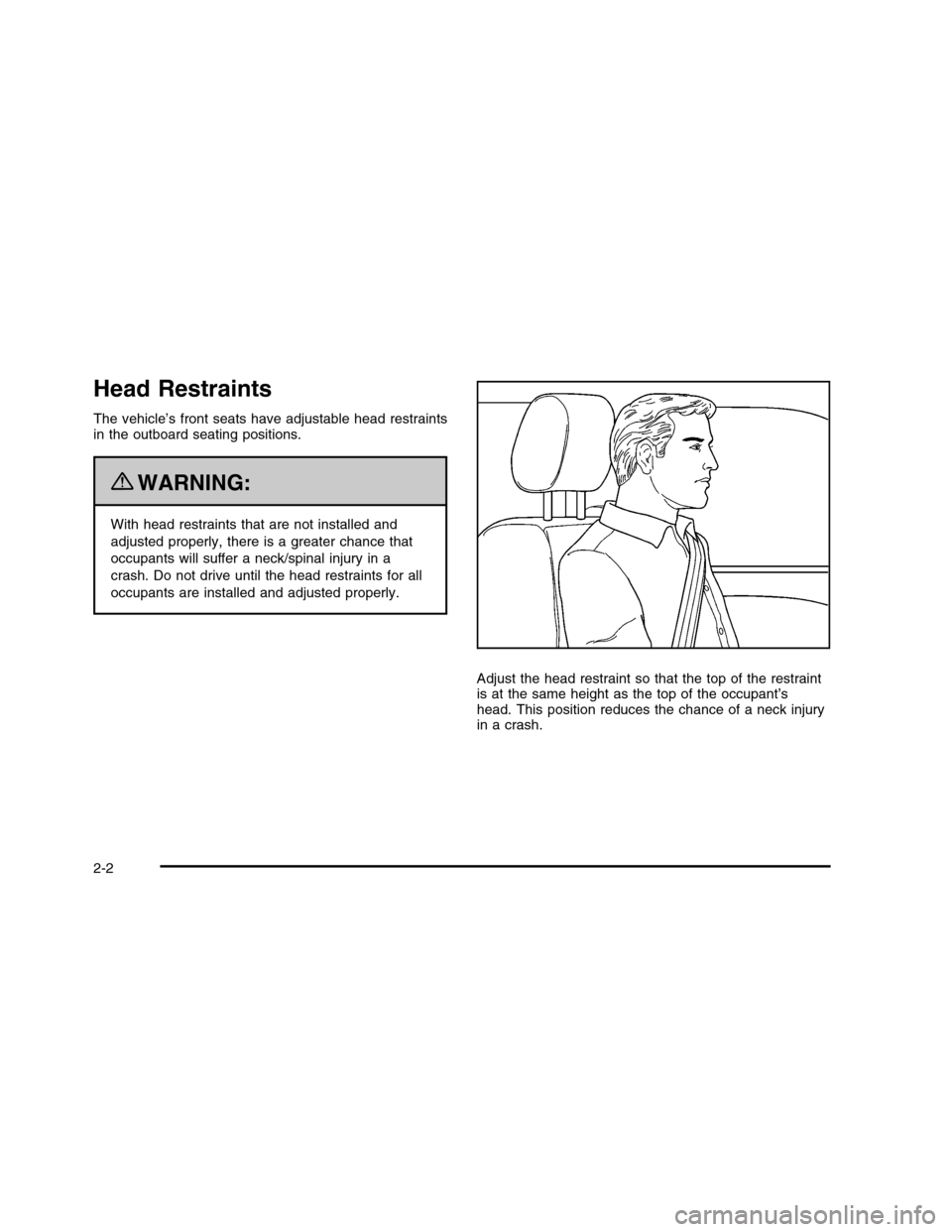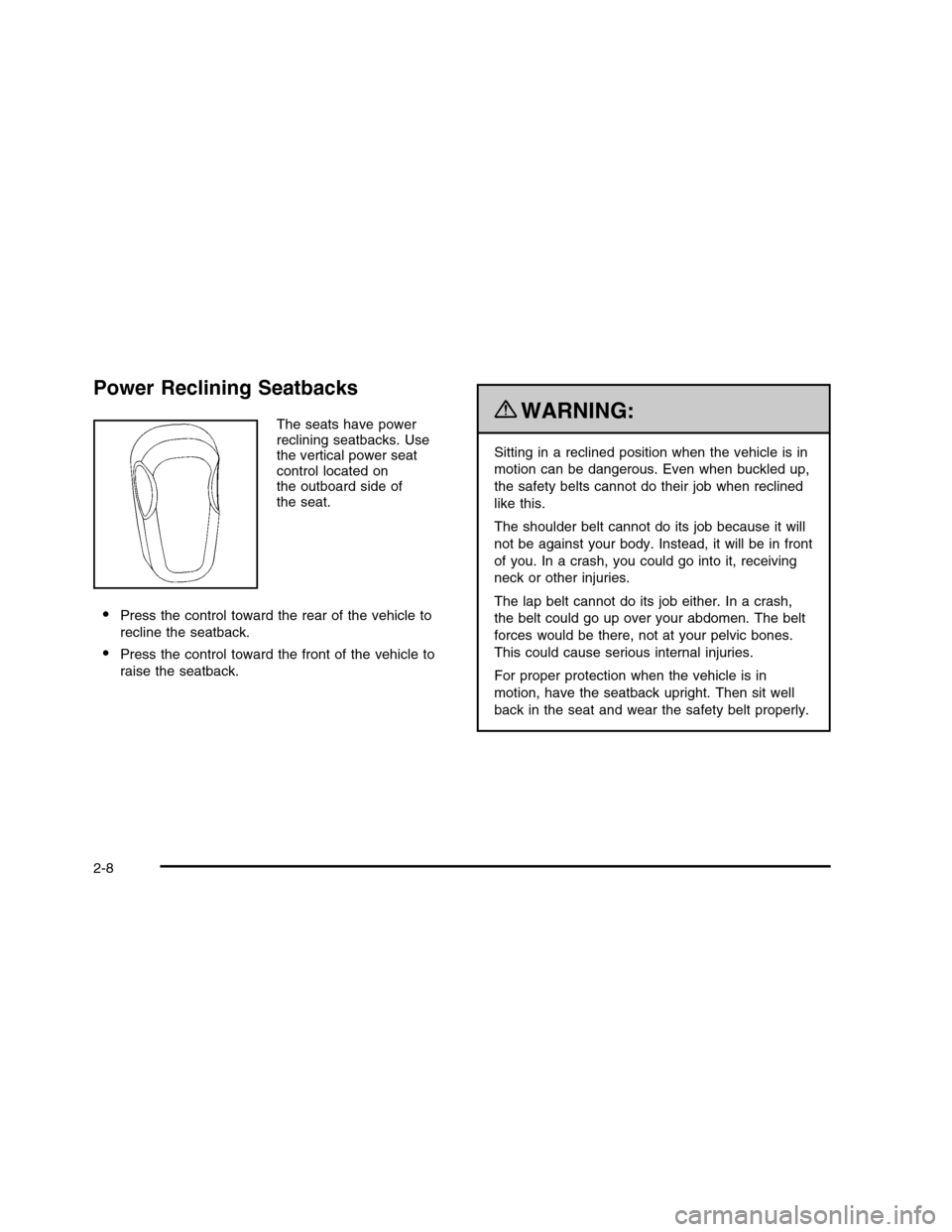CADILLAC DTS 2010 1.G Owner's Guide
Manufacturer: CADILLAC, Model Year: 2010, Model line: DTS, Model: CADILLAC DTS 2010 1.GPages: 480, PDF Size: 17.56 MB
Page 31 of 480

Location information about the vehicle is only availableif the GPS satellite signals are unobstructed andavailable.
The vehicle must have a working electrical system,including adequate battery power, for the OnStarequipment to operate. There are other problems OnStarcannot control that may prevent OnStar from providingOnStar service at any particular time or place. Someexamples are damage to important parts of the vehiclein a crash, hills, tall buildings, tunnels, weather orwireless phone network congestion.
OnStar Steering Wheel Controls
This vehicle may have a Talk/Mute button that can beused to interact with OnStar hands-free calling. SeeAudio Steering Wheel Controls on page 4-119for moreinformation.
On some vehicles, the mute button can be used to dialnumbers into voice mail systems, or to dial phoneextensions. See the OnStar Owner’s Guide for moreinformation.
Your Responsibility
Increase the volume of the radio if the OnStar advisorcannot be heard.
If the light next to the OnStar buttons is red, the system
may not be functioning properly. PressQand request
a vehicle diagnostic. If the light appears clear (no light isappearing), your OnStar subscription has expired and
all services have been deactivated. PressQto confirm
that the OnStar equipment is active.
1-25
Page 32 of 480

!NOTES
1-26
Page 33 of 480

Head Restraints. . . . . . . . . . . . . . . . . . . . . . . . . . . . . . . . . . . . . . . . . . . . . . .2-2
Front Seats. . . . . . . . . . . . . . . . . . . . . . . . . . . . . . . . . . . . . . . . . . . . . . . . . . . . . .2-3Power Seats . . . . . . . . . . . . . . . . . . . . . . . . . . . . . . . . . . . . . . . . . . . . . . . . . .2-3Power Lumbar . . . . . . . . . . . . . . . . . . . . . . . . . . . . . . . . . . . . . . . . . . . . . . .2-4Massaging Lumbar . . . . . . . . . . . . . . . . . . . . . . . . . . . . . . . . . . . . . . . . .2-4Heated and Ventilated Seats . . . . . . . . . . . . . . . . . . . . . . . . . . . .2-5Memory Seat, Mirrors and Steering Wheel . . . . . . . . .2-6Power Reclining Seatbacks . . . . . . . . . . . . . . . . . . . . . . . . . . . . . .2-8Center Seat . . . . . . . . . . . . . . . . . . . . . . . . . . . . . . . . . . . . . . . . . . . . . . . . . . .2-9
Rear Seats. . . . . . . . . . . . . . . . . . . . . . . . . . . . . . . . . . . . . . . . . . . . . . . . . . . . .2-10Heated Seats . . . . . . . . . . . . . . . . . . . . . . . . . . . . . . . . . . . . . . . . . . . . . . .2-10Rear Seat Pass-Through Door . . . . . . . . . . . . . . . . . . . . . . . .2-11Power Lumbar . . . . . . . . . . . . . . . . . . . . . . . . . . . . . . . . . . . . . . . . . . . . . .2-11
Safety Belts. . . . . . . . . . . . . . . . . . . . . . . . . . . . . . . . . . . . . . . . . . . . . . . . . . .2-12Safety Belts: They Are for Everyone . . . . . . . . . . . . . . . .2-12How to Wear Safety Belts Properly . . . . . . . . . . . . . . . . .2-17Lap-Shoulder Belt . . . . . . . . . . . . . . . . . . . . . . . . . . . . . . . . . . . . . . . . .2-26Safety Belt Use During Pregnancy . . . . . . . . . . . . . . . . . .2-31Lap Belt . . . . . . . . . . . . . . . . . . . . . . . . . . . . . . . . . . . . . . . . . . . . . . . . . . . . . .2-32Safety Belt Extender . . . . . . . . . . . . . . . . . . . . . . . . . . . . . . . . . . . . .2-33
Child Restraints. . . . . . . . . . . . . . . . . . . . . . . . . . . . . . . . . . . . . . . . . . . . .2-33Older Children . . . . . . . . . . . . . . . . . . . . . . . . . . . . . . . . . . . . . . . . . . . . . .2-33Infants and Young Children . . . . . . . . . . . . . . . . . . . . . . . . . . . .2-37
Child Restraint Systems . . . . . . . . . . . . . . . . . . . . . . . . . . . . . . . . .2-41Where to Put the Restraint . . . . . . . . . . . . . . . . . . . . . . . . . . . . .2-44Lower Anchors and Tethersfor Children (LATCH) . . . . . . . . . . . . . . . . . . . . . . . . . . . . . . . . .2-45Securing a Child Restraintin a Rear Seat Position . . . . . . . . . . . . . . . . . . . . . . . . . . . . . .2-51Securing a Child Restraintin the Center Front Seat Position . . . . . . . . . . . . . . . . .2-53Securing a Child Restraintin the Right Front Seat Position . . . . . . . . . . . . . . . . . . .2-54
Airbag System. . . . . . . . . . . . . . . . . . . . . . . . . . . . . . . . . . . . . . . . . . . . . . .2-58Where Are the Airbags? . . . . . . . . . . . . . . . . . . . . . . . . . . . . . . . .2-60When Should an Airbag Inflate? . . . . . . . . . . . . . . . . . . . . .2-63What Makes an Airbag Inflate?. . . . . . . . . . . . . . . . . . . . . . .2-65How Does an Airbag Restrain? . . . . . . . . . . . . . . . . . . . . . . .2-65What Will You See After an Airbag Inflates? . . . . .2-66Passenger Sensing System . . . . . . . . . . . . . . . . . . . . . . . . . . . .2-67Servicing Your Airbag-Equipped Vehicle . . . . . . . . . . .2-72Adding Equipment to YourAirbag-Equipped Vehicle . . . . . . . . . . . . . . . . . . . . . . . . . . . . .2-73
Restraint System Check. . . . . . . . . . . . . . . . . . . . . . . . . . . . . . . . . .2-74Checking the Restraint Systems . . . . . . . . . . . . . . . . . . . . . .2-74Replacing Restraint System PartsAfter a Crash . . . . . . . . . . . . . . . . . . . . . . . . . . . . . . . . . . . . . . . . . . . .2-75
Section 2 Seats and Restraint System
2-1
Page 34 of 480

Head Restraints
The vehicle’s front seats have adjustable head restraintsin the outboard seating positions.
{WARNING:
With head restraints that are not installed and
adjusted properly, there is a greater chance that
occupants will suffer a neck/spinal injury in a
crash. Do not drive until the head restraints for all
occupants are installed and adjusted properly.
Adjust the head restraint so that the top of the restraintis at the same height as the top of the occupant’shead. This position reduces the chance of a neck injuryin a crash.
2-2
Page 35 of 480

Pull the head restraint up to raise it. To lower the headrestraint, press the button, located on the top of theseatback, and push the restraint down.
Push down on the head restraint after the button isreleased to make sure that it is locked in place.
The head restraints are not designed to be removed.
Front Seats
Power Seats
The power seat controlsare located on theoutboard side of the seats.
•Move the seat forward or rearward by sliding the
control forward or rearward.
•Raise or lower the front part of the seat cushion by
moving the front of the control up or down.
•Raise or lower the rear part of the seat cushion by
moving the rear of the control up or down.
The front seats also have power reclining seatbacks.SeePower Reclining Seatbacks on page 2-8.
On vehicles with the memory feature, memory settingscan be programmed and recalled for seat positions. SeeMemory Seat, Mirrors and Steering Wheel on page 2-6.
2-3
Page 36 of 480

Power Lumbar
The power lumbar controlsare located on the outboardside of the front seats.
Press the front or rear of the lumbar control to increaseor decrease support. Press the top or bottom of thecontrol to raise or lower the support mechanism.
Massaging Lumbar
On vehicles with thisfeature, the switch islocated on the outboardside of the front seatsbehind the lumbar switch.
Press the switch to turn the massaging lumbar featureon. The ignition must be on for this feature to work. Themassage cycle will run for up to 10 minutes. To stopmassage, press the massaging lumbar switch again orpress the power lumbar switch.
2-4
Page 37 of 480

Heated and Ventilated Seats
On vehicles with heated and ventilated seats, theignition must be on to use the feature.
The buttons are located onthe front doors.
J(Heated Seat Cushion and Seatback):Press this
button to heat the seat cushion and seatback.
I(Heated Seatback):Press this button to heat the
seatback.
H(Ventilated Seat Cushion and Seatback):Press
this button to cool the seat cushion and seatback.
Press each button to turn on the desired feature. A lighton that button will display indicating which feature is on.
There are three temperature settings for each feature.A column of three lights next to the buttons will displaywhich setting the feature is in: high, medium or low.Three lights indicate the highest setting, two lightsindicate medium and one light indicates the lowestsetting.
When you press a button, the feature will turn on at thehighest setting. Each time you press the button, thefeature will decrease one temperature setting.
To turn the feature off, keep pressing the button untilthe display lights turn off.
If your vehicle has remote vehicle start and is startedusing the remote keyless entry transmitter, the frontheated seats will be turned on to the high setting if it iscold outside. See “Remote Vehicle Start” underRemote Keyless Entry (RKE) System Operation onpage 3-4. When the key is inserted into the ignition andthe ignition is turned on, the heated seat feature willturn off. To turn the heated seat feature back on, pressthe desired button.
Driver’s Side Buttonsshown
2-5
Page 38 of 480

Memory Seat, Mirrors and
Steering Wheel
On vehicles with the memory package, the controls arelocated on the driver door panel. The controls areused to program and recall memory settings for thedriver seat, outside mirror, and steering wheel position ifthe vehicle has the power tilt wheel and telescopicsteering feature.
To save positions in memory:
1. Adjust the driver seat, including the seatbackrecliner and lumbar, both outside mirrors, andthe steering wheel to a comfortable position.
2. Press and hold button 1 until two beeps soundthrough the driver side front speaker to let youknow that the position has been stored.
A second seating, mirror, and steering wheel positioncan be programmed by repeating the previous steps andpressing button 2 for a second driver.
To recall memory positions, the vehicle must be inP (Park). Press and release either button 1 or button 2corresponding to the desired driving position. Theseat, outside mirrors, and steering wheel will move tothe position previously stored for the identifieddriver. You will hear a single beep.
2-6
Page 39 of 480

If you use the RKE transmitter to enter the vehicle andthe remote recall memory feature is on, automaticseat and mirror movement will occur. See “MEMORYSEAT RECALL” underDIC Vehicle Customizationon page 4-80for more information.
To stop recall movement of the memory feature at anytime, press one of the power seat controls, memorybuttons, power tilt wheel control, or power mirrorbuttons.
If something has blocked the driver seat and/or thesteering column while recalling a memory position, thedriver seat and/or the steering column recall maystop. If this happens remove the obstruction, then pressthe appropriate control for the area that is not recallingfor two seconds. Try recalling the memory position againby pressing the appropriate memory button. If thememory position is still not recalling, see yourdealer/retailer for service.
Easy Exit Recall
The control for this feature is located on the driver doorpanel between buttons 1 and 2.
With the vehicle in P (Park), the exit position can berecalled by pressing the exit button. You will heara single beep. The driver seat will move back, and if thevehicle has the power tilt wheel and telescopic steeringfeature, the power telescopic steering column willmove up and forward.
If the easy exit seat feature is on in the DIC, automaticseat and power telescopic steering column movementwill occur when the key is removed from the ignition.See “EASY EXIT RECALL” underDIC VehicleCustomization on page 4-80for more information.
Further programming for automatic seat and steeringwheel movement can be done using the DriverInformation Center (DIC). You can select or not selectthe following:
•The easy exit recall feature
•The memory seat recall feature
For programming information, seeDIC VehicleCustomization on page 4-80.
2-7
Page 40 of 480

Power Reclining Seatbacks
The seats have powerreclining seatbacks. Usethe vertical power seatcontrol located onthe outboard side ofthe seat.
•Press the control toward the rear of the vehicle to
recline the seatback.
•Press the control toward the front of the vehicle to
raise the seatback.
{WARNING:
Sitting in a reclined position when the vehicle is in
motion can be dangerous. Even when buckled up,
the safety belts cannot do their job when reclined
like this.
The shoulder belt cannot do its job because it will
not be against your body. Instead, it will be in front
of you. In a crash, you could go into it, receiving
neck or other injuries.
The lap belt cannot do its job either. In a crash,
the belt could go up over your abdomen. The belt
forces would be there, not at your pelvic bones.
This could cause serious internal injuries.
For proper protection when the vehicle is in
motion, have the seatback upright. Then sit well
back in the seat and wear the safety belt properly.
2-8